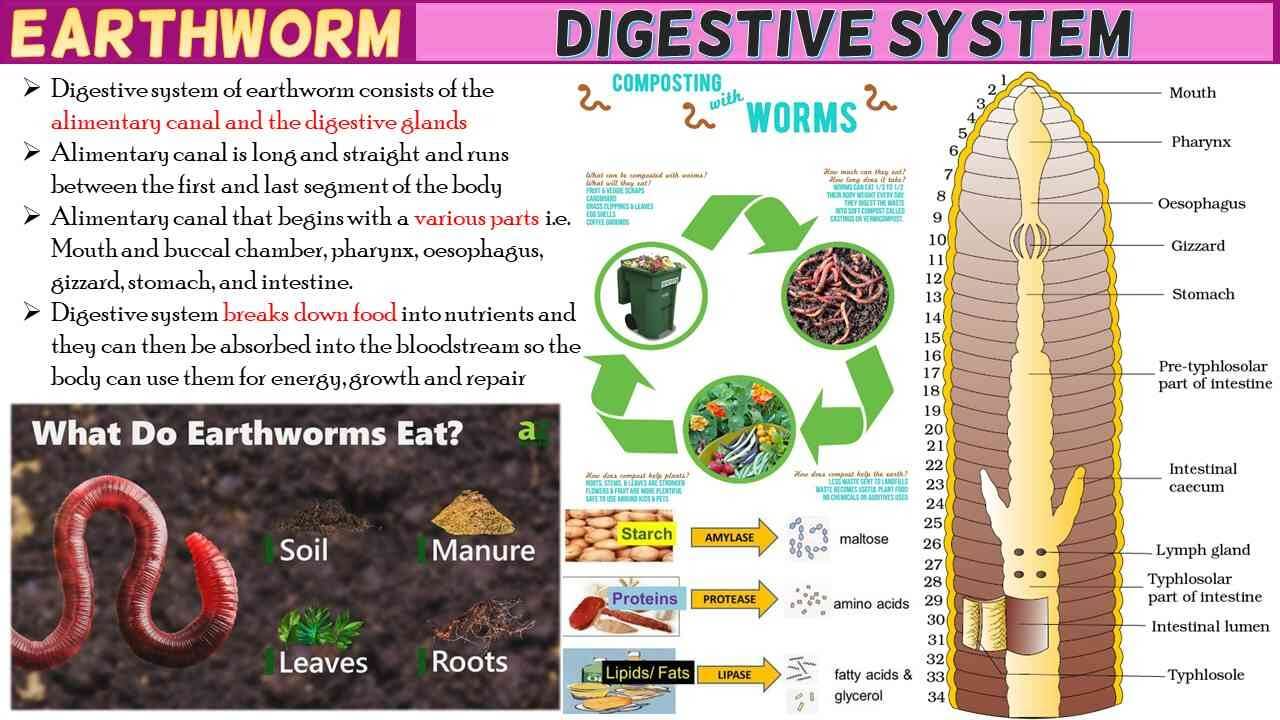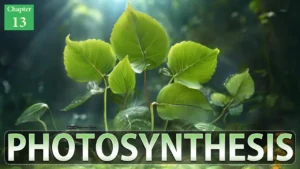Table of Contents
Earthworm Digestive System Short Notes
In this article we will discuss about the earthworm digestive system
Earthworm Digestive System
- Earthworm digestive system consists of the alimentary canal and the digestive glands
- Alimentary canal is long and straight and runs between the first and last segment of the body
- Alimentary canal that begins with a various parts i.e. Mouth and buccal chamber, pharynx, oesophagus, gizzard, stomach, and intestine.
- Earthworm digestive system breaks down food into nutrients and they can then be absorbed into the bloodstream so the body can use them for energy, growth and repair
Alimentary Canal and Digestive Glands
| PARTS OF ALIMENTARY CANAL | SEGMENT | FEATURES AND FUNCTION |
| Mouth | 1 |
|
| Buccal cavity | 1-3 |
|
| Pharynx | 4 |
|
| Oesophagus | 5-7 |
|
| Gizzard | 8-9 |
|
| Stomach | 9-14 |
|
| Intestine | 15 – last |
|
| Anus | Last |
|
Physiology of Digestion in Earthworm
- Mouth and the buccal cavity takes part in the ingestion
- In pharynx saliva mixed with ingested food
- Food then pass through oesophagus into gizzard
- In gizzard grinding or crushing of food material takes place into fine state
- Grinded food material enters into the stomach. Calcification process start.
- Food then move into intestine.
- Various enzymes present in the intestine act on food.
- Typhlosole increases the absorption surface of the intestine
- Undigested food is egested out through the anus
- Earthworm faeces are called as casting
You may also like: –
- Earthworm Morphology Short Notes
- Body Wall of Earthworm Short Notes
- Earthworm Digestive System Short Notes
- Earthworm Circulatory System Short Notes
- Earthworm Nervous System Short Notes
- Earthworm Excretory System Short Notes
- Earthworm Reproductive System Short Notes
For more detailed information about Structural Organisation in Animals, download now full study material as PDF and if you want to learn more detailed information about Structural Organisation in Animals, visit YouTube Channel.



![[PPT] The living world Class 11 Notes](https://rajusbiology.com/wp-content/uploads/2024/06/PPT-The-living-world-Class-11-Notes-300x169.webp)
